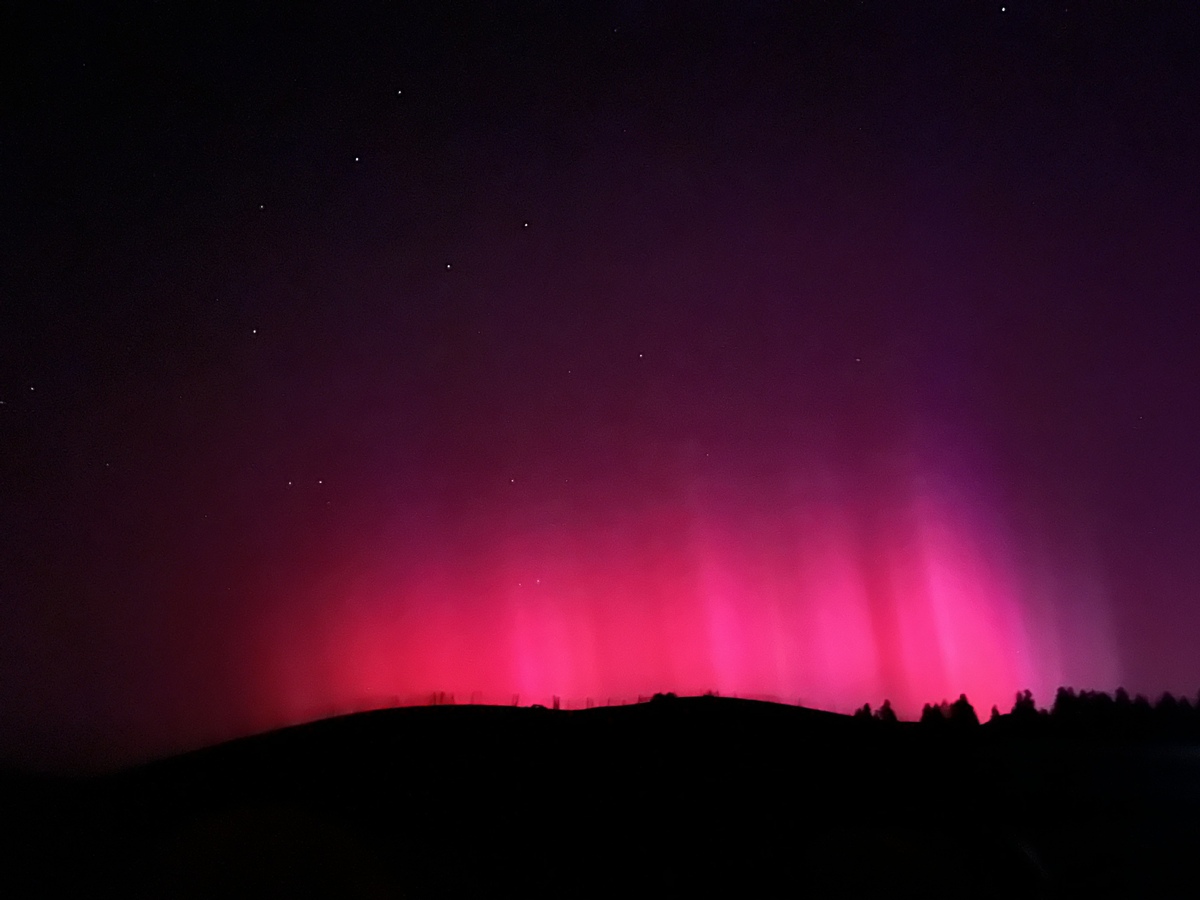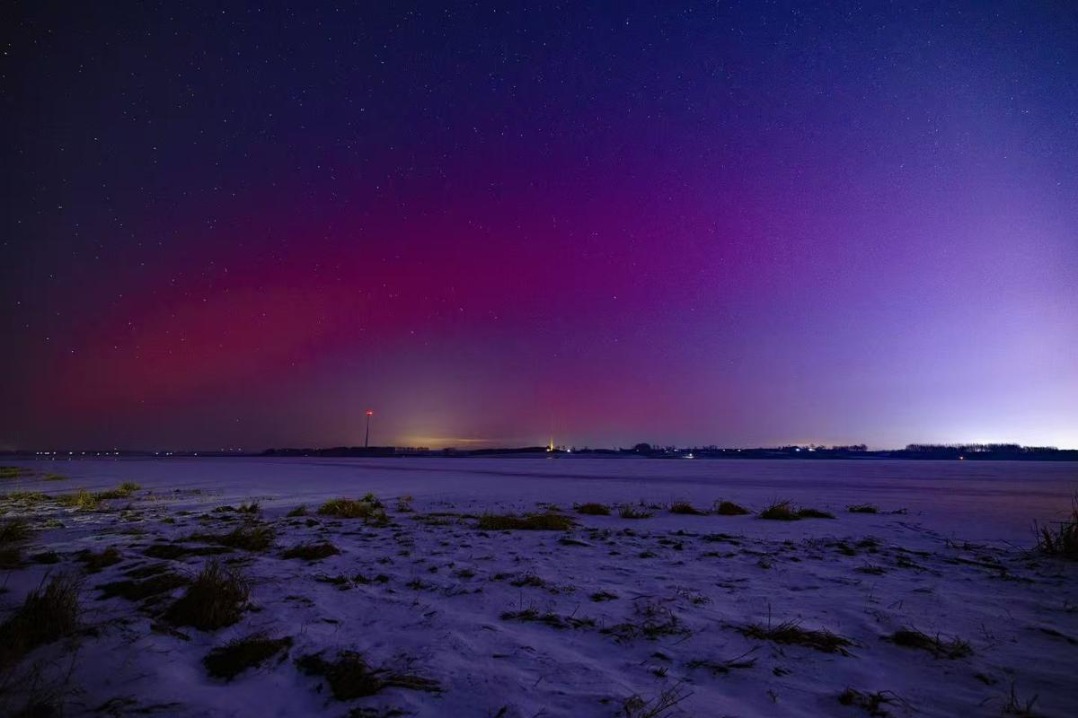Stunning red sky over China wins fans online


Photographs of stunning red aurora displays in parts of North China have attracted plenty of online interest recently, being praised for their exceptional beauty, rarity in the region, and distinctive coloring compared with the blue and green auroras typically observed in Nordic countries.
"As a 'byproduct' of geomagnetic storms, auroras are formed when high-energy particles brought by intense solar activity collide with the upper atmosphere of the Earth, resulting in a varied display of colors at different altitudes," said Chen Anqin, chief forecaster at China's National Center for Space Weather, adding that it is normal to see red auroras in mid-latitude regions like China during periods of intense solar activity.
People in parts of Heilongjiang and Gansu provinces, and the Xinjiang Uygur and Inner Mongolia autonomous regions witnessed the aurora borealis last weekend.
Parts of the United States, Namibia and Jamaica also reported auroras.
Most auroras happen about 90 to 400 kilometers above the Earth's surface, showcasing light red hues above 300 km, and transitioning to dark red between 200 and 300 km, green between 100 and 200 km, and a mix of colors like blue and purple below 100 km, according to Chinese National Geography, a monthly magazine affiliated to the Chinese Academy of Sciences.
Because of the curvature of the Earth's surface, if the observation point is too distant from the aurora, the Earth itself will block some distant objects, resulting in only the higher-altitude red light being visible, the magazine said.
This year has witnessed more frequent and intense solar activity due to it being the peak of the 11.2-year solar cycle, Chen said.
Multiple moderate and strong solar flares associated with coronal mass ejections have been observed since last Wednesday.
Early on Saturday morning, the National Center for Space Weather announced its first watch for a G5 geomagnetic storm — the strongest rating on scale from G1 to G5 — since 2006, and it issued the strongest-level of warning for a geomagnetic storm the same day.
From Wednesday through Friday, solar activity is expected to be at moderate to high levels, with a chance of strong flare activity, G1 to G3 geomagnetic storms and ionospheric disturbance, the center said.
"Currently, the probability of observing additional aurora borealis in the near future is low, as the recently solar active region is about to rotate toward the far side of the sun, out of sight from and unable to have an impact on Earth," Chen said, adding there was little likelihood of intense solar flares or coronal mass ejections in other regions.
- China, CELAC vow to broaden education collaboration
- Sichuan amphibious ship returns after maiden sea trial
- Justice on horseback: bringing the court to Xinjiang's herders
- China issues alert on overseas study in Japan
- Chinese scientists discover lunar rust, revealing new oxidation process on the moon
- China's major airlines offer refunds and rebooking for Japan-bound passengers amid security alert




































